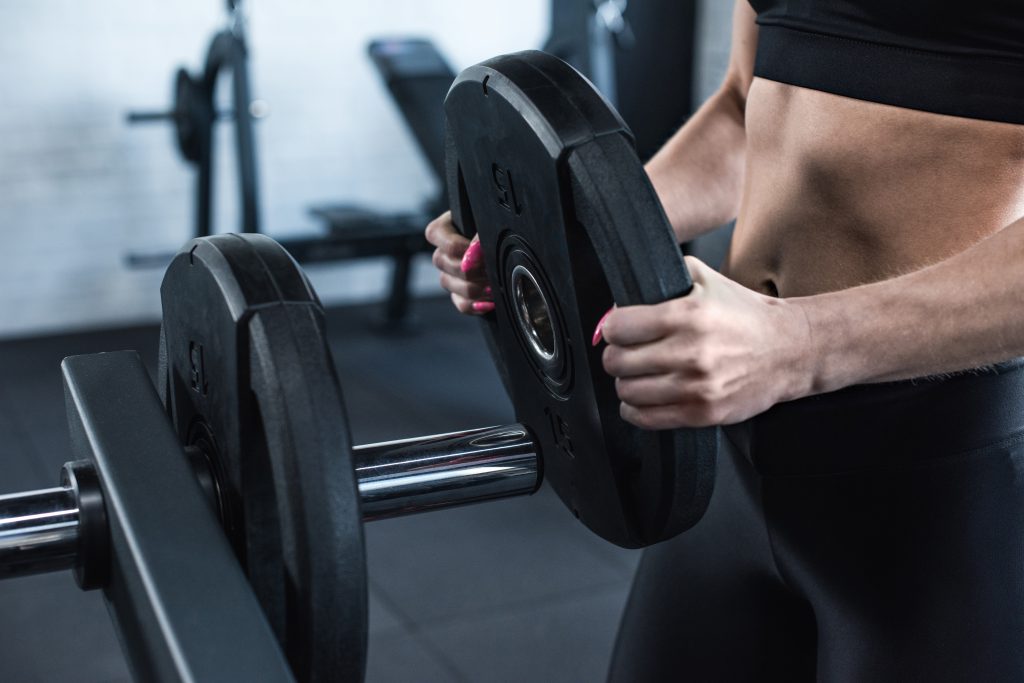If You Want to Correct Shit You Need to Own Shit
I’ve used a similar slogan in other ways:
“If you want to fix shit you need to lift shit.”
“If you want to fix shit do shit right.”
“Shit, shit, shitty, shit.”
There’s a t-shirt in there somewhere…;o)
Needless to say: 1) I have a potty mouth (#sorrynotsorry) and 2) I’m a firm believer that strength training is not only a wonderful (and often overlooked) way to get people strong(er) – duh! – but also as a means to “correct” or address a perceived dysfunction/road block in movement.1

Copyright: lightfieldstudios / 123RF Stock Photo
Owning POSITION(s)
I work with a lot of individuals who complain of shoulder ouchies, especially as it relates to performing stuff overhead.
There are any number of factors to consider:
- Tight lats.
- Poor anterior core strength.
- Tight pecs.
- Wearing blue.
Who knows? Lots of things can run awry.
I think it behooves any coach/trainer to put on their detective’s hat, dig deep(er), and try to ascertain what could be the root cause for someone’s discomfort or pain.
SIDE NOTE: Too, I think it’s important to be careful of scope of practice and not DIAGNOSE anything. Nothing irritates me more – other than people who refer to themselves as an “entrepreneur” or “influencer” – than a personal trainer who thinks he or she is a physical therapist or doctor and attempts to diagnose their clients:
“Ah, yes, I see your left shoulder lacks internal rotation. I think it may be cancer.”
It’s within our wheelhouse to assess movement, of course, and to use that information to help guide programming. But outside of that I implore you to stay within your lane and not get into the habit of diagnosing anything.
Okay, end rant.
Back to why someone’s shoulder hurts.
All of what I mentioned above applies and can definitely be a part of the conversation.
One factor, however, that often gets glanced over is the congruency of the shoulder blades and rib cage.
I.e., Can a concave scapula play nicely together with a convex rib cage?
One way to accomplish this is to give the Serratus Anterior muscle waaaaaaay more attention than we typically give it. The Serratus is a “reaching” muscle and helps the shoulder blade move AROUND the rib cage.
For those who have been incessantly told to keep the shoulder blades “together & back” – which, to be fair, is important to lift heavy things – it can sometimes result in faulty mechanics where they’re more or less cemented in place.
And, shoulder blades that don’t move = no bueno.
Renowned physical therapist, Shirley Sahrmann, popularized the phrase “Scapular Downward Rotation Syndrome” in her book Diagnoses and Treatment of Movement Impairment Syndromes.
Without getting into the wordplay too much, Downward Rotation Syndrome can be the result of a few things, but the main players at play are (generally) overactive/tight Rhomboids, levator scapula, and lats. Symptoms can range anywhere from subsequent glenohumeral compensatory joint motion (joint fraying to tears) and instability to neck pain, and, in extreme cases, thoracic outlet syndrome.
It sounds like some nefarious, end-of-days stuff (and it can be).
However, rest assured the “fix” can be quite accessible.
Anything which allows more reaching (protraction), in addition to better access to rib cage expansion (movement), can be MONEY for many people.
You can see both in action in what’s undoubtedly the most boring video on the internet.
1️⃣ As I press my hands forward I’m thinking about reaching as far out in front of me as possible (I’m not keeping the shoulder blades still).
Hello Serratus. Nice to meet you.
2️⃣ As I progress overhead I’m reaching upward towards the ceiling with my upper traps, staying careful not to cheat via my lower back. Ribs stay down.
Not coincidentally BOTH – Serratus & Upper Traps – play an integral role in scapular upward rotation.
The shoulder blades are designed to move!
If overhead activities hurt it could be because you’ve programmed yourself to keep them in place.
3️⃣ At the top I’m OWNING the position (very important) by adding a breath: INHALE through the nose expanding the rib cage all around. Then a FULL, accentuated, EXHALE to get the ribs down and promote a canister position (rib cage stacked over pelvis).
It’s harder than it looks.
4️⃣ Pants optional.
If you want to aid better overhead motion – or just help people’s shoulders feel better – it’s imperative to get the shoulder blades and ribcage to become BFFs and to OWN better position(s).
Less band external rotation drills and more Serratus activation in concert with positional breathing.
EDIT: Props to both Luke Worthington and Conor Harris for the idea.



Comments for This Entry
Patrick
Tony these look really challenging. Would you regress them by moving to standing? For a progression would you lean towards a heavier band or ever consider going tall kneeling? Man I’d be toppling over for sure from y’all kneeling 😂February 26, 2020 at 10:22 am |
Dustin Burgemeister
Amen! Could not agree more with you more Tony. I do this exercise with my clients and is a huge help in serratus engagement. Keep up the great work!February 27, 2020 at 8:47 am |